Wide-format Graphics: Printing photographic art for Luminato
by all | 27 October 2016 10:16 am
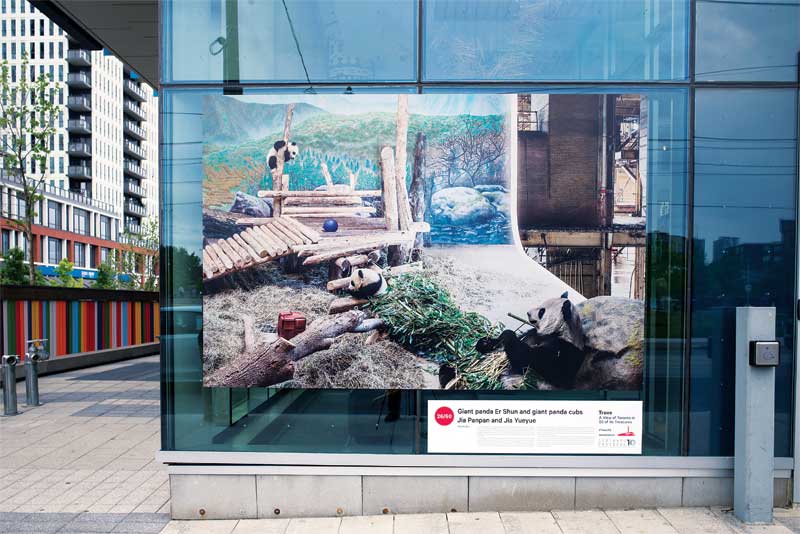
Photo by Jonathan Castellino, courtesy Luminato
By Peter Saunders
Earlier this year, for the 10th annual edition of Toronto’s Luminato festival of art and creativity, Beyond Digital Imaging (BDI) in Markham, Ont., printed and installed poster-size versions of photographer Scott McFarland’s series Trove: A View of Toronto in 50 of Its Treasures. The only place to see all 50 photos was at the central hub for Luminato 2016, the 65-year-old decommissioned Hearn Generating Station, but they could also be found throughout the city in public locations from June 10 to 26.
Choosing treasures
The project began with the notion of bringing the 50 most important objects, works of art and ideas in Toronto to the public. This would entail choosing ‘unseen’ treasures that sat within the walls of museums, institutions and private collections—where only those who know they are there could seek them out—and using the entire city as one enormous art gallery, with an exhibition of these treasures out in the open for everyone to see. In this way, the project would share what only a fraction of Torontonians knew about and celebrate what makes the city special.
“We looked far and wide and wrote to hundreds of people and museums and asked them for ideas,” says Jörn Weisbrodt, artistic director of the Luminato festival from 2011 to 2016, who curated the project and contracted McFarland for the photography. “We had to make choices. Not everything made the final cut. And the selection was not definitive or objective. It was highly personal and subjective. We did not want to come up with objective criteria, like monetary value, which would have excluded so many things. We instead applied more instinctive values, e.g. what would we save in an earthquake? What, pieced together, would paint a picture and tell a story of this city?”
Once they were selected, McFarland photographed the physical objects and works of art within their places of origin, in most cases in front of a neutral background.
“The objects were diverse and widespread, but as photographic images, it would become possible to bring all of them together in one exhibition,” says Weisbrodt. “It was the idea of freeing them from institutional walls, but nothing had to move.”
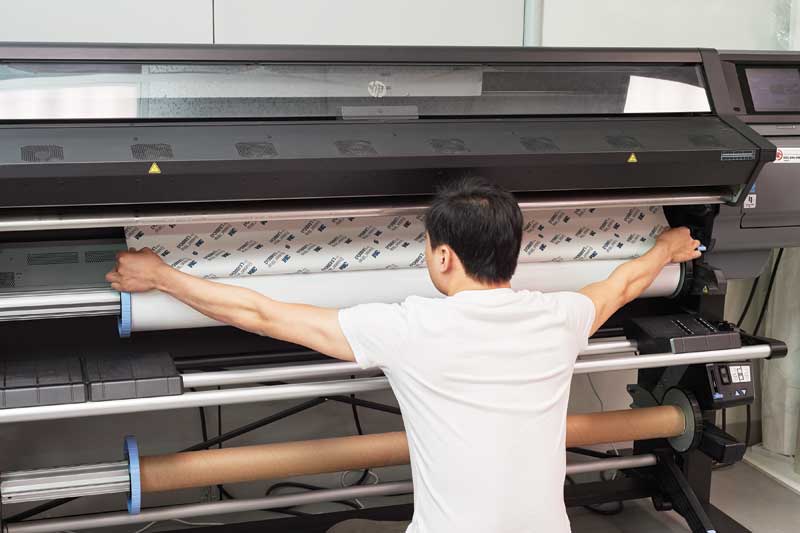
Beyond Digital Imaging (BDI) produced the graphics using a durable aqueous ‘latex’ inkjet printer.
Photos courtesy Beyond Digital Imaging
Proposing a gallery
Next, McFarland collaborated with architects from Toronto-based firm Partisans to develop a digital design of how an art gallery could be laid out inside the Hearn, which had been proposed as the site for Luminato’s first-ever residency. The plan, dubbed #TurnOnTheHearn, was to temporarily transform the former power plant into a cultural community centre, featuring a theatre, a music stage, a site-specific performance space, restaurants, bars and more.
Dubbed the ‘Hearn Jackman Gallery’ to acknowledge a donation from the Hal Jackman Foundation, McFarland and Partisans’ series of three-dimensional (3-D) renderings incorporated photos taken inside the actual station and vistas viewed from it, so as to achieve a more photorealistic effect overall. Then McFarland placed his photos of the objects in the 3-D renderings. The final images suggested how a gallery could be conceived of for the Hearn, with Partisans’ architectural design using the upper level of the facility’s former turbine hall.
“We explicitly did not want to divide up the objects into any categories,” says Weisbrodt. “We wanted to create free associations, counterpoints and surprise combinations that would invite audiences to develop their own narrative. And Scott’s images already gave a glimpse into curatorial decisions, as most images did not contain only one object, but also secondary objects in the background as you would see in a real gallery.”
That said, the treasures were ordered and grouped into a series of 14 sub-galleries or ‘pods,’ each with a title that picked up on some common threads and could invite further thought (see list on page 32). This became the order in which the poster-size images would be displayed inside the Hearn over a space spanning more than 270 m (886 ft) from west to east, while their outdoor counterparts would be scattered across the city.
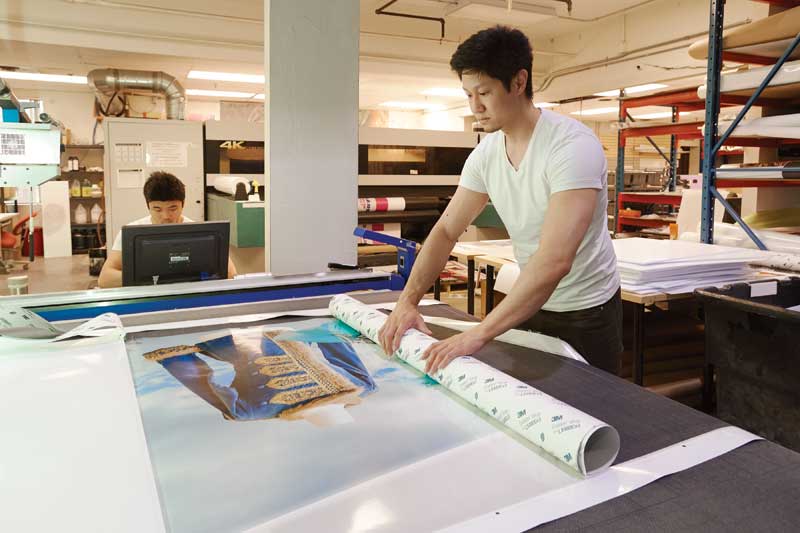
The process had to be repeated several times to allow for sufficient colour corrections.
“Jörn really wanted to turn the city into an art gallery or a museum, filled with its most prized treasures,” says Swapnaa Tamhane, who was brought on as producer for the project. “In a way, the idea stemmed from wanting to celebrate the initial philanthropists who were involved in supporting Luminato through its first 10 years and their collections.”
“Trove is also a proposal for what a future gallery could look like inside the Hearn,”
says Weisbrodt.
The need for vinyl
The Hearn Jackman Gallery was set up on the northern side of the station in the former turbine hall, about 12 m (39 ft) above ground level and accessible by stairs and elevator.
“The main challenge was the Hearn’s designation as a heritage building,” says Tamhane. “Any application on the bricks had to be minimal and not leave behind any marks or holes. We had long discussions about our options. Initially, we were thinking about printing the photographs on an aluminum composite material (ACM) and drilling into the bricks, until we found out that was not an option! We therefore decided to go with a vinyl application, which could be installed on the walls with a bit of heat and then removed by hand.”
Fortunately, by this point, Tamhane and project co-ordinator Jeremy Forsyth had already worked with community partners—ranging from Enwave Energy to the Drake Hotel—to find locations throughout the city for the outdoor applications, including 25 of Pattison Outdoor Advertising’s local billboards, which would temporarily be filled with artwork instead of the usual ads. By working with BDI both for the public space and at the Hearn, the team ended up using the same semi-gloss vinyl from 3M Canada—specifically, Envision print wrap film LX480Cv3, along with Envision lustre wrap overlaminate 8549L—for a wide variety of placements. And as a further benefit, 3M helped sponsor the project for Luminato—which is a non-profit organization—by donating the material for the Hearn.
“That was a huge help to our project budget,” says Tamhane.
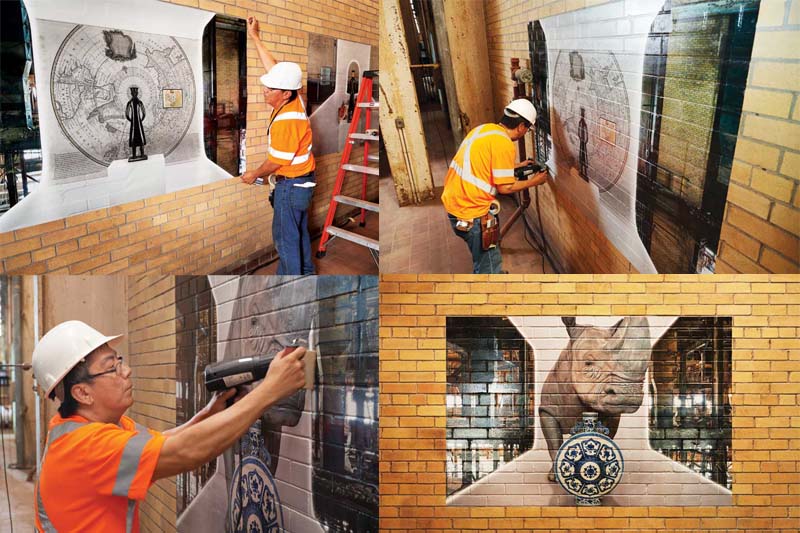 [1]
[1]As the Hearn is a heritage building, the applications could not leave behind any marks or holes. The vinyl graphics could be installed on the walls with a little heat and removed later by hand.
“3M partners with graphics manufacturers like BDI on community projects that truly make an impact,” says Jacqui Newell, marketing planning and communications manager for 3M Canada’s commercial solutions division in London, Ont. “We were interested in the Luminato festival project because it would combine graphic wraps with a local artist’s work.”
Dotting the city
Aside from working with Pattison, the team reached out to Toronto’s various downtown business improvement areas (BIAs), which were able to recommend a list of community partners with available sites.
“We sent them information regarding the project and a request to use their external walls, with a detailed description of how each work would be installed and, finally, removed,” says Tamhane. “We had an overwhelmingly positive response, with many partners keen to participate in Luminato. As well, many were great fans of McFarland’s work. It was really through this process that we created our final list of public locations, which were dotted throughout the city from east to west.”
The wrap film was key to this process, as not only could it be conformed to textured surfaces like brick walls, but it also has been updated recently for easier removal.
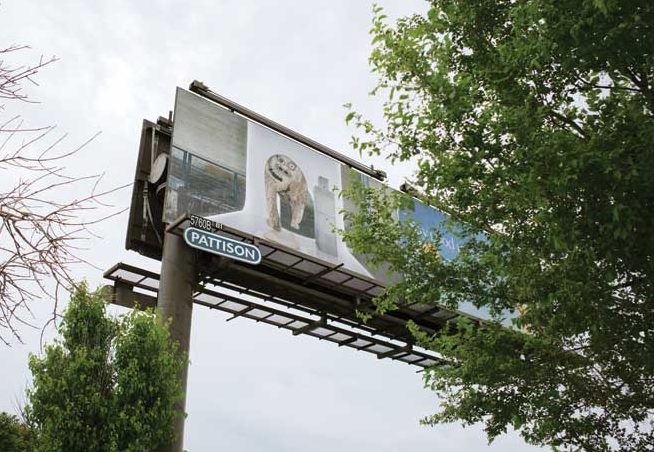
Applications across the city ranged from window decals to Pattison Outdoor billboards.
Photos by Jonathan Castellino, courtesy Luminato
“The city’s walls are the perfect canvas to display this type of art installation,” says Newell. “This wrap film is one of the tools artists can use to expand their creativity in those places without disrupting the existing architecture.”
In addition to wall murals and billboards, some of the printed versions of Trove’s photos became window decals, displayed in stores. Also, the integration of digital billboards and other large-format screens—including those at the Air Canada Centre (ACC), Bank of Montreal (BMO) Field and Ricoh Coliseum sports venues—into the project meant multiple artworks could be shown dynamically in the same location.
“It would hopefully surprise those who see the images at a street corner, on the side of a building, in a shop window or on a digital billboard and make them wonder why they didn’t know all these treasures existed in their city,” says Weisbrodt.
Getting the colours correct
With the sheer scale of the project apparent, Luminato turned to BDI, which is known for handling large and complex graphic applications, to print and install the photos of Trove. This was when the 3M film was chosen, based in part on BDI’s previous experience installing outdoor photo prints using similar materials for Toronto’s annual Contact photography festival. For that matter, BDI had also worked with Luminato many times in the past.
Kelly Tsao, project manager for BDI, led the effort to produce the large-format Trove graphics on a 1.4-m (4.5-ft) wide HP Latex 360 durable aqueous inkjet printer.
“There were challenges at first in terms of getting the reproductions to match the colours of the original artworks,” says Tamhane.
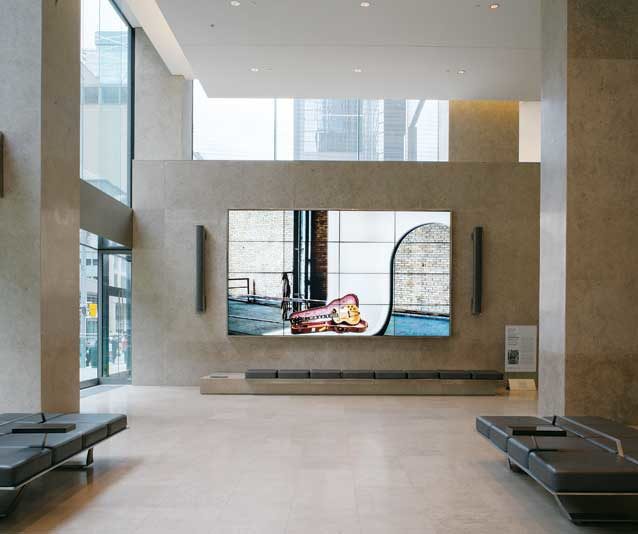
Video walls and other digital signage deployments allowed multiple artworks to be showcased dynamically in the same location.
“Artists are very particular about colours, but they can’t print a large-format image themselves for us to colour-match,” Tsao explains. “So, for this project, Luminato sent us a batch of digital files. We output them with a default colour set and then they corrected them based on our output, at which point we received the files again and reprinted them.”
This process had to be repeated several times to get the colours right. To limit variations, Tsao made sure to use the same printer each time.
“We couldn’t switch machines or the colours would appear different,” he says.
The graphics for the Hearn were each 1.2 x 1.8 m (4 x 6 ft), while those designed for outdoor installation were scaled up as large as 2.4 x 2.4 m (8 x 8 ft).
“We had a sufficient schedule allotted for printing,” Tsao says, “but with the approval process, the colour corrections took up most of the time.”
That’s a wrap
The timeline for the project was also challenging in that the graphics could only be installed in the Hearn after Luminato had taken temporary possession of the facility, cleaned the walls and removed nails and other obstructions. Then BDI’s team arrived to set up the gallery.
“We had never been to the Hearn before, but the installation was quick,” says Tsao. “This version of 3M’s film is easier to use than their earlier brick vinyl. We found that was also the case a few weeks later when we did the removal.”
“The application and removal of the artwork were both incredibly smooth,” Tamhane agrees. “It took only 35 minutes at the Hearn to remove 50 images, which must be a record!”
With files from 3M Canada and Beyond Digital Imaging. For more information, visit www.3mgraphics.ca[2] and www.bdimaging.com[3].
| THE TREASURES OF TROVE |
|
The 50 photos of Trove were divided into 14 galleries, as follow. Gallery 1: Comedy of Human Desires Gallery 2: Hidden Structures Gallery 3: Death and Last Wishes Gallery 4: Wound of Discovery Gallery 5: Bull in the China Shop Gallery 6: Drama of Personal Life and Fame Gallery 7: Anatomy of Pop Culture Gallery 8: Current Origin of Species Gallery 9: Massacre and Protection Gallery 10: Inspiration of the Male Gaze Gallery 11: Spirit and the Flesh Gallery 12: Nature in Living Gallery 13: Utopia Gallery 14: Entrance to the Lookout |
- [Image]: http://www.signmedia.ca/wp-content/uploads/2016/10/edit1.jpg
- www.3mgraphics.ca: http://www.3mgraphics.ca
- www.bdimaging.com: http://www.bdimaging.com
Source URL: https://www.signmedia.ca/wide-format-graphics-printing-photographic-art-for-luminato/